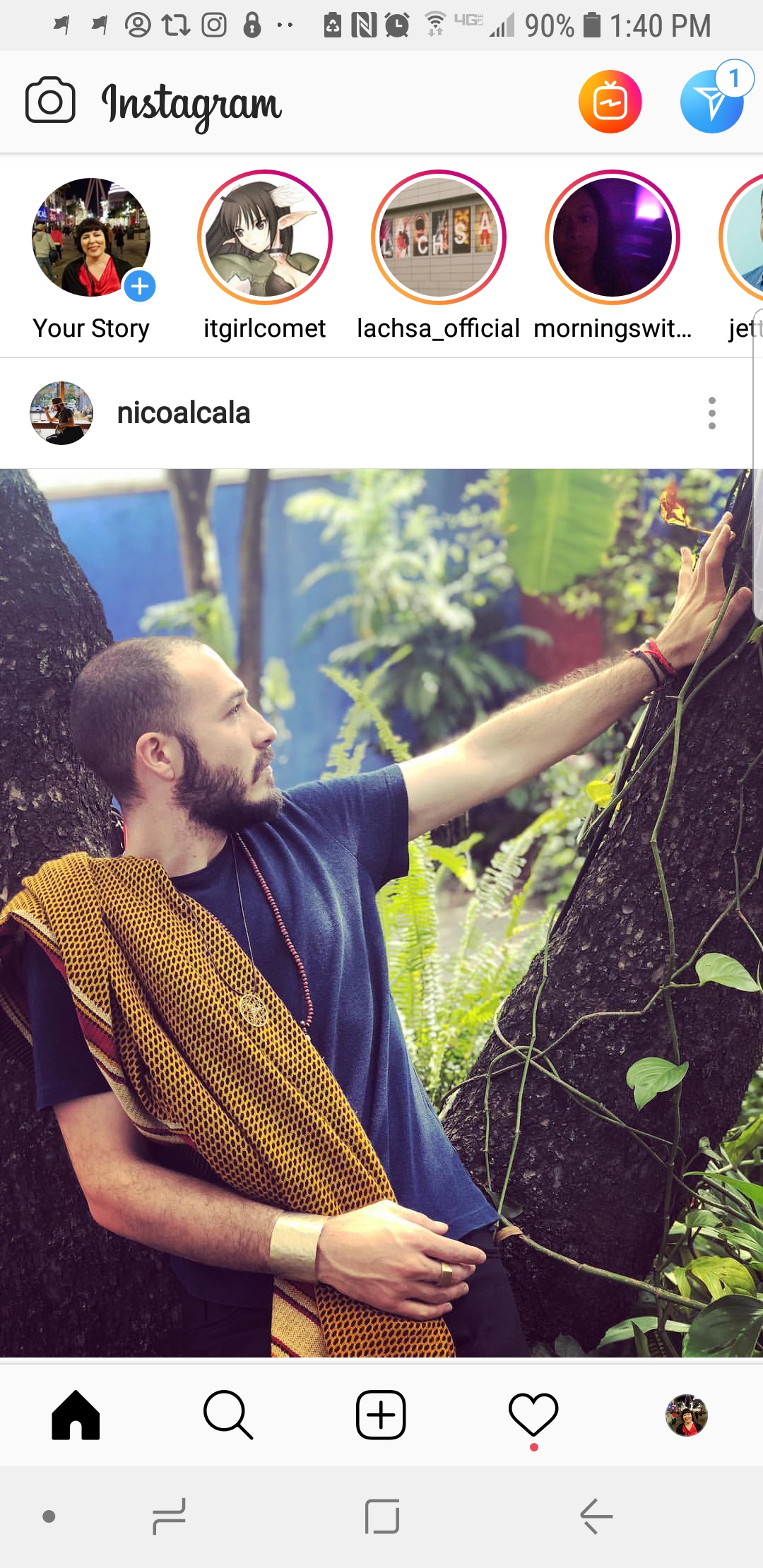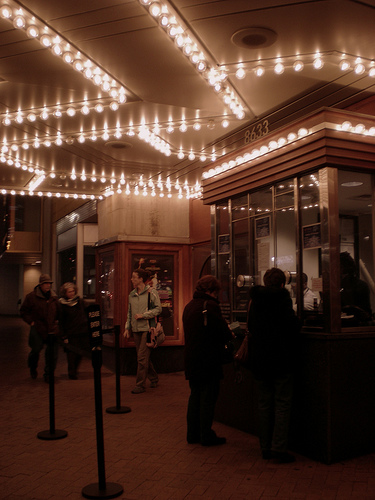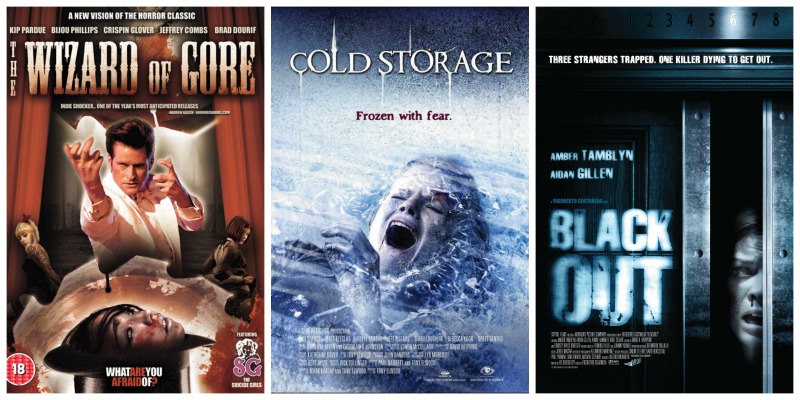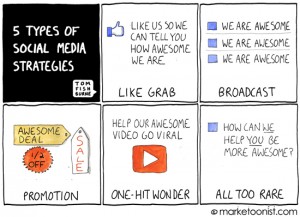
Best Advice For Marketing an Independent Video Project
Last month, TFC invited a select group of Los Angeles-based filmmakers to share their knowledge and specific details about how they marketed and distributed their independent films. We learned a lot and we thank those who took part that day. Now, we want to open up this opportunity to all creators, whether you make features, short films, or web series, so that we all may learn from each other in an anonymous, but factual way.
We know, many other entities have tried to compile statistics and details and have invited independent creators to contribute, but we think a lot of that information has been less than forthcoming or distributed within only a small subsection of creators who participate in closed labs or mentoring sessions. We propose to do something different.

For the next month, we are asking any creator who has actually participated in the marketing and distribution of their project (this is a requirement) to come forward and fill out this 10 question survey in detail. No questions will be asked about the identity of the creator or of the project which should allow participants to be completely honest about their efforts and results. The results will be compiled into a whitepaper of best practices and charts showing budget levels and revenue levels that will benefit the creators operating in this turbulent and confusing period of plenty of consumer choice, but creator uncertainty about the financial viability of their work. The whitepaper will be published online, for all to download for free.
We sincerely hope you will agree to help us, all of us, by participating. Our aim is to have the whitepaper ready for distribution by the beginning of the new year. TFC mailing list members will be notified first, so if you want a first look, please join that list here. Everyone will have access via this blog once the document is published.
We’re really excited to learn what creators are doing and we know you will find their insight invaluable. Thanks for participating!
Sheri Candler September 11th, 2017
Posted In: case studies, Distribution, Marketing
Tags: film budget, film distribution, film marketing, film revenue, survey, The Film Collaborative
Is this mic on? Stop making these well worn filmmaking mistakes
I’m back to blogging after a long (2 years!) hiatus in law school and the first thing I want to discuss is something that frustrates us about the filmmaker consultations we give. At The Film Collaborative (TFC), it is shocking how much of what we said 5 years ago when we first started the company and what we continue to say over and over again has not trickled down and stuck to filmmakers.
While we like to think that we are changing minds and getting filmmakers to be more proactive about making their own decisions regarding distribution of their films, sadly, this doesn’t seem to be the case in the majority. The same issues keep coming up (no you probably won’t be getting a 7 figure deal for distribution…no your film is not a fit for Sundance…no you shouldn’t just sign any deal that slides across the table).
Maybe you’re afraid of letting go of the notion that your job is only to make a good film and someone will buy it for big sums and you can move on fast to your next film.
Maybe you’re worried that if you cannot look an investor in the eye and say that the odds of selling and making all the film’s money back within a year or two are good, you won’t be able to make films.
Maybe you aren’t actually following any of the information currently coming out of every festival panel and industry publication about how the distribution world stands today.
But that doesn’t mean new information isn’t available and the independent film world still works like it did in 2008.
This is information we analyze daily at TFC. Clinging to the old mythology just makes it easier for distributors to cling to non-transparency in how money is made in distribution and it’s all a vicious and unsustainable cycle. You need to know the real story on how deals are structured now, what kinds of revenue is being recouped and why, and what role audience data plays in the continuation of your filmmaking career. This is not some 90’s pipe dream of make a film, reap immediate millions.
In law, they call that “willful blindness” where a person seeks to avoid liability for a wrongful act by intentionally putting his or herself in a position where he or she will be unaware of facts that would render him or her liable. It’s not pretty to see, especially after all this time of talking about properly laying ground-work for self financed distribution. It has to stop and it will eventually because someone who is willfully blind won’t be working as a filmmaker for much longer.
Of course it’s not all about money, it’s also about building your audience and having your film seen and developing your career. These are actually all quite connected, much more often than not.
Here’s a list of things we have been saying for years and keep saying. Please let this stuff stick, it’s good for you! And the more people practice it, the healthier this will be for artists and for the business in general.
Top 15 mistakes made by filmmakers that shouldn’t keep happening are:
Making a horror film and only start thinking in August about how to release it by October of the same year. If you are planning a digital release, you need about a 4-6 month lead time.
Not building community around your film until after you premiered it at a festival (or worse, completed the circuit) such that then you squandered opportunities to build buzz, demonstrate and test audience appeal, and build awareness and marketing or organizational partnerships for future release before your buzz is gone.
Not clearing music rights believing that your distributor will be happy to pay for clearance. Profit margins are already slim for distributors, so they aren’t going to outlay for this expense. Plus, it makes you look unprofessional and extremely misinformed if you don’t have all of your clearances. Plan to work with a music supervisor.
Stealing money from your marketing and distribution budget to feed your production budget even though both are needed. In fact, if you can’t market and distribute your film, you probably shouldn’t even make it. Stop with assuming you won’t need to market and distribute your film. You will at least need to build up some kind of audience awareness and it will be smart for you to start getting immediate revenue from direct distribution.
Making your first documentary largely out of stock footage, which is probably the most expensive kind of documentary you can make. Stock footage is expensive to clear and if you have no track record of success in filmmaking, it is better to steer clear of making an expensive film as your first attempt.
Making a film with no notable names, no clearly identifiable audience, and no plan for how to distribute or market the title. This is an especially bad idea if you were planning to have someone else buy it and distribute it because it has virtually no market value.
Relying on box office gross as an indicator of the commercial success of a film, and using those numbers for the business plan of your film. Box office revenue is only top line revenue, not net revenue and certainly not an indicator of profit.
Believing that MGs in the 6-7 figure range are common for films without A-list talent. Read the trades after a major festival or film market and see what MGs are paid and for what level of talent in the film. If you don’t have this level, you aren’t getting that MG.
Skipping taking good photography on set and thinking frame grabs of the cast and crew will cut it when formulating key art and meeting deliverable requirements from buyers. Here is our post on what is needed for making key art. Still images are absolutely imperative to film sales and film promotion, but also to populate social media channels. Don’t skimp on photography.
Having a 4-minute trailer. Really? Please don’t. Also related, letting your intern or the editor of your film cut your trailer. Please hire a professional trailer editor because it is that important to gaining audience interest in seeing your film.
Forgetting that artwork on digital platforms is small, not theatrical poster size. It demands clear imagery with no extra text (laurels, URLs, credit block, rating etc).
Conflating “distributor” with “aggregator” and even with “platform” – they are different, the deals will be different, your expectations should be different, etc. This leads filmmakers to make bad or incomplete decisions. See our post on distribution terms.
Many filmmakers drastically “overthink” their festival strategy, and hold back from festival invitations for fear that actions taken now will overexpose the film and hurt its chances with press and distributors later. The truth is that INACTION is the far greater danger. By all means, you should obsess about the right world and international premieres …after that, just identify the best festival opportunities in each local market and let it fly, making sure to also address the festivals that cater to your niche along the way.
Hiring a lawyer who does not know the film business to handle your film deals. Okay, that’s a shameless plug since I’m an attorney now. But truly, as much as knowing the law matters, knowledge of what can be negotiated in a film distribution deal matters so much when it comes to monetizing rights and protecting your work.
Conducting screenings of your film (test screening as well as festivals) and not having a system for collecting email contact details so you can keep in touch about the progression of the release. When will you have another chance to contact these people again? Maximize your ability to keep in contact. There are now some text to subscribe services you can use rather than pass the clipboard.
A lot of film consultants, industry bloggers, film festival panelists, and others all saying the same thing so it’s time to realize what they are telling you is true. Can you hear me? Is this mic still on? It’s time not just to hear, but to listen and follow the advice people are freely telling you. You should no longer continue to make these mistakes.
Wishing you all the good things in your filmmaking career.
Orly
Orly Ravid September 24th, 2014
Posted In: Distribution, DIY, Film Festivals, Marketing
Tags: biggest mistakes filmmakers make, film distribution, film marketing, independent film, mistakes filmmakers should avoid, Orly Ravid, The Film Collaborative
Approaching Indie Film As An Actual Business
I was speaking with a producer friend of mine this week, and she told me a disturbing (if familiar) story, with a surprisingly inspiring conclusion.
She recently exec produced one of 2014’s “bigger” independent films…which is set for theatrical release soon. They did just about everything right. The film is written and directed by a well known, highly respected auteur on the indie scene, with a long career. It stars two very well-known character actors, who are just about household names if not quite “movie stars.” The budget was modest. It premiered at one of the pinnacle A-level film festivals. There it was bought by one of the biggest mini-majors in the business, and has since sold 18 territories worldwide. Even before theatrical release, the investors have all made a significant percentage of their money back…albeit not all of it (and certainly no profit).
She was lunching with one of the films other producers recently and she asked him… “If the film grosses 1 million dollars theatrically, do you think we’ll see any more money?” He said, “probably not.” So she said, “Ok what if it grosses 3 million?” And he said “probably not.” “10 million?” “Probably not.”
She said that’s when it dawned on her…. producing and selling an independent film the traditional way (i.e. selling all rights out of a festival premiere) is simply not a business. (BOOM…head exploding). In any other business, making back a percentage of your investment is not a success story. In indie film, we shrug our shoulders and say, “Well, that’s the way it goes” and move on to the next one.
The lack of a sound business model in independent film is what we at TFC have been trying to address all along. The “old way” of producing and selling indie films is actually a shell game at best, a way of moving money from one spot to the next that is equal part a gambling game and equal part a con-job. Sure, there are a few unmitigated success stories every year…just enough to create a delusional atmosphere that casts a spell over thousands of filmmakers who think they can just make their movie and walk away as it magically finds its way into the world and fills their pockets with cash.
Anyway, it just so happens that my producer friend is currently working on a new film, and with the production schedule being the way it is, she knows for sure it won’t be done for at least another year. And after that, of course the inevitable wait for the right Festival premiere, which can take several additional months. As such, she figures that this time she has plenty of time to re-imagine the traditional model, and approach the film as an actual business. My producer friend comes from an entrepreneurial background, where she created and sold tech companies.
This time, this film, she vows, she is going to approach the distribution and marketing of the film the way she did with her tech companies in the past, and build it like an actual business. Not wait around for some other company to come in later and supposedly do it for her.
My producer friend and I plan to sit down in the next few months and have detailed conversations about what that actually looks like, but for now, I am going to use this post to outline some of the basics….and (hopefully) create the beginnings of a road map that others can follow.
NOTE: I am aware that I have been vague with the particulars of the first film mentioned in this post…which may annoy some readers. This was intentional of course, A) I don’t have permission to reveal the details, and B) the basic principals and outcomes are transferable to most every film that has received distribution offers out of a major festival in recent years.
In any case, here we go…some of my basic guidelines to approaching an independent film like the building of any other business.
1) Break down and list every source of potential revenue for the film – and plan how to capitalize on them all. This may seem self-evident, but I’ll wager this is the most overlooked of all independent distribution strategies. That’s because most filmmakers want to sell their film outright, and count on the distribution company to do all the right things. But most distribution companies only do a few things well (if any), and they will inevitably leave numerous stones unturned.
Start with a comprehensive list of every way you can see your film making money, i.e festival screening fees, domestic sales, international sales, theatrical-on-demand (i.e. GATHr or TUGG), community screenings, traditional theatrical, DVD sales at live events, other merchandising, digital downloads etc. Then figure out how many of these you can do yourself, and where you’ll need help from others.
2) Know from the beginning who your audience is – and have a strategy for how to reach them. I know, I know, this is dismaying to most filmmakers. Most filmmakers see themselves as artists first, motivated by self-expression, and actually hope that their film is for everyone, not just a select target group. But remember, just by making an independent film, you are de facto not making a film for everyone (unless you have movie stars)…since the vast majority of the global population doesn’t consume independent film on any kind of regular basis.
In independent film, niche is king AND queen, and you need to think of your target audience as your core customer base. Approach them like any business would…who am I selling to and how do I reach them? And if your core customers love your product, then they’ll tell others about it too. Think long and hard and soul search on this question…if you don’t know who your film is for, you run the risk that it will be for no-one at all.
3) Smart marketing is everything. Hollywood studios find their audiences by essentially buying them, spending vulgar multi-millions on TV ads, billboards, publicity firms to access late night TV talk shows etc….basically putting their product in front of everyone who doesn’t live in a cave. But chances are you can’t do that.
Smart marketing actually stems from question 2…who is your core audience and how do you reach them? And here’s where the important question comes…where do those people congregate such that you can actually speak to them? If you determine that your audience is “women between the age of 30 and 40,” that isn’t particularly useful because that’s too disparate to reach. Not ALL of them congregate in the same place. But if you determine there is a certain set of bloggers and websites that your audience reads and by obtaining coverage or placing ads, you can reach them there, well that’s something you can wrap your head around.
I usually advise that filmmakers start well in advance and build a big excel grid of every organization, every website, every blogger, every tastemaker, every everything they can think of and methodically reach out to them with news about their film. You usually can’t do this until you’ve actually starting shooting..so you can at least share images and teasers etc…but please don’t wait until you are finished with the film. This process takes too long… often by then it is too late.
I shouldn’t have to mention that this is of course where social media comes in as well. You want your social media strategy to start on Day One of shooting if possible. And, as always, you’ll want your social media strategy to be as interactive and engaging as possible…not just a platform for naked self-promotion.
4) Have a rigorous and vigorous approach to crowdfunding. Independent filmmaking can seem downright depressing at times…but it’s times like this we should thank our lucky stars for the relatively recent phenomenon of crowdfunding. What a miracle it is….and the best part of all….you don’t have to give the money back. Plus you are building up an audience that is motivated to see your film succeed.
These days it seems reasonable…for the right project…to launch crowdfunding campaigns in pre-production, for finishing funds, and to jumpstart your distribution, as long as you have a compelling message to impart to the world. And a great video of course… it all comes down to the video (and to a lesser extent the perks). Remember, however, that a crowdfunding campaign is hard work…its like a whole other job, which can certainly seem daunting during production. But if you don’t work hard at it…it won’t work. The good news is, if you DO work hard at it, the success rate is amazing!
5) Explore the granting world. Like crowfunding money, grant money is money you won’t have to pay back (meaning the best kind). Grant money is usually a better fit for documentaries of course, but we’ve also worked on plenty of narrative features with a theme or message that attracted grantees. Also, don’t forget that there are also (some) grants for outreach/distribution, for films with an important social message. To pursue grants, you’ll probably also need a fiscal sponsoring organization to back you, which can be The Film Collaborative or a number of other independent film non-profits. To read more about TFC’s fiscal sponsorship progam, go HERE.
6) Pre-sell as little as possible. This is a quandary for many filmmakers. You need the money to finish the film, but then when it’s finished, those rights are tied up and you can’t exploit them in a way that you’d like to. And, again, unless you have bona fide movie stars, your film will be infinitely less valuable before you finish it than when it is premiering at a major festival like Sundance etc. Time and time again I hear filmmakers say, “I pre-sold my film to x territory (usually broadcast) because I needed the money, now I wish I could just give them the money back.”
7) Parcel off your rights in as many pieces as possible. This is something that TFC’s founder Orly Ravid has specialized in….i.e. engaging as many different companies as possible to handle as many different rights categories as possible. This goes back to what I said earlier, different companies are better at different things. This “parceling” is particularly important because many all-rights holders are using many middle-men companies to get to various platforms etc. You want to be as DIRECT AS POSSIBLE with your various points of sale, cutting out as many middle-men as possible.
8) Explore Transmedia. This is admittedly difficult for the vast majority of independent, character-driven narrative features…although there are some notable exceptions. But for genre/sci-fi features this is an area rich with possibility, through games, contests, spin-off stories etc. And most often overlooked is the potential for documentaries to explore transmedia, especially since most documentaries have countless hours of footage they aren’t using in the finished film itself. And for issue-oriented docs, there is usually a wealth of other sources, both scholarly and journalistic, that can be folded into your website. For documentaries, your website should be an equal “entry-point” into the issues raised by the documentary, and should ultimately lead to more viewers/consumers of the film. That is the very essence of transmedia…multiple entry points into the larger experience.
9) Have a well-thought out strategy for digital distribution. My aforementioned producer friend was in the tech business, so her focus is on possibly creating her own portal where her target audience can download the film directly, thereby cutting out all middle-men entirely.
Nonetheless, in today’s world you have to expect (hope) that the most viewers for your film will be paying customers in the digital realm. And thankfully, just getting your film onto a few big digital platforms these days isn’t particularly difficult (to read more about the digital distribution offered by The Film Collaborative, go HERE. But here is where #2 (target audience) and #3 (smart marketing) come in most importantly….if you just throw your film onto iTunes, how is anyone going to know it’s there?
Unfortunately, there aren’t a lot of great companies you can hire that work for very little money to assist you with the marketing part. So this may be yet another job you and your team might have to do for yourselves.
10) Keep the budget as low as possible. This may seem like the most obvious point of all, and yet it is incredibly subjective. I can’t tell you how many times I cringe when hear filmmakers say “we kept our costs down…it only cost 1 million dollars!” Well, a million dollars isn’t what it used to be….and I mean that in the reverse way it is traditionally meant. With the plethora of cheap digital cameras and desktop editing leading to an explosion in independent film, supply WAY outstrips demand… and a million dollars is quite an expensive indie movie these days. Most importantly, at a million dollars chances are there is probably no amount of DIY distribution techniques that will recoup your investment, and you’ll be back in the initial quandary, meaning you will NEED a significant traditional sale from a distributor to have any chance of making most of your money back.
So, when I say keep your budget low…to be honest I am talking more like $100,000. And I know that’s not always possible. So if you can’t do it for something in the low six-figures, you’re back to that place where you need to start thinking about movie stars.
11) Put a minimum of 10 – 15% of your budget aside for marketing and distribution costs. This is a VERY small percentage of your budget that really will only enable you to start building a core audience, but a core audience can grow wider if word of mouth is active.
Again, I know this is easier said than done. Even if you line-item that with the best intentions, many filmmakers will pilfer along the way for a few extra days of shooting, etc. But chances are you’ll find yourself with a finished film with no more money to get it out into the world….no money for festival trips, no money for smart marketing, no money to hire a publicist, etc. Recognizing that even the initial stages of marketing and distribution require capital, we at TFC implore you not to fall into the trap of being cash-strapped right at the time you need it most.
Most of all of what I have outlined above fall under the producer’s responsibilities, and are sometimes referred to the work of what might be called the PMD or “Producer of Marketing and Distribution.,” and are crucial to development of a producer business model for indie film.
Interestingly, sometimes I think there is a clearer business model for directors of independent film. Directors have a clearer path to a business model that makes sense…direct an indie gem, premiere it at Sundance to great acclaim, and then get hired by Hollywood to direct commercial TV and film (think Christopher Nolan, who seemingly went directly from Memento to Batman). But producers seem to start at step 1 with every script.
It is my hope that by following the guidelines listed in this post, at least some of the groundwork to planning a profitable business model for an independent film can be laid out in advance.
Jeffrey Winter August 19th, 2014
Posted In: crowdfunding, Digital Distribution, Distribution, DIY, Long Tail & Glut of Content, Marketing, transmedia
Tags: business models, film distribution, film marketing, independent film, Jeffrey Winter, The Film Collaborative
Marketing a horror film-the trailer
One of the absolute strongest pieces of marketing you will create for your film is its trailer. The other is the key art. I wish more filmmakers appreciated how important having a kick ass trailer is and stop trying to save money by editing it themselves or having their feature editor do it. A horror film audience is typically younger and very distracted. A trailer that fails to capture attention in less than 5 seconds is easily turned off in the quest to find something more interesting.
I spoke with professional trailer editor Michael Kurthy of Ye Olde Trailer Shoppe, Inc. about what goes into editing film trailers, especially horror trailers.
SC:What is the first thing you do when you sit down to edit? How do you evaluate the film to choose the elements that will go into a compelling trailer?
MK: “If I’m working directly with the producer, we usually collaborate on coming up with a marketing direction for the film. The producer usually has some ideas, but is so close to the film that they don’t see the ‘big’ picture on how to sell the film to a wide audience. Every film is different and requires a different approach. I will do a ‘Break down’ of the film prior to cutting the trailer. This is basically deconstructing the entire film shot by shot/dialog line by dialog line. I try to use the footage and dialog to tell a story, but if that can’t be done, I will write or hire a copy writer to tell the story with narration. The trend these days is NOT to use copy. Sometimes we will be working on a film in the early stages of production and we will indeed use a shot that may not make it into the final cut of the released feature.”
SC: Is there a difference between what goes into cutting a trailer for a horror film and cutting any other kind of narrative film? Are there “rules” or conventions that go into marketing a horror film that you follow? Does it depend on what the trailer is supposed to do (IE, sell the film to industry vs sell the film to the consumer)?
MK:”The only difference is that horror is usually paced slower, more pregnant pauses are used to accentuate a particular moment and we like to use more sound FX. When I cut the trailer for The Wizard of Gore, a remake of a 70’s Vincent Price horror film, I chose to skillfully use music and sound FX that would drive the trailer along in a frenetic manner, with lots of stops. I concluded with a high energy rock cue from the feature soundtrack because it worked so well to pull the whole trailer together at the end.”
SC: How important is music in a horror trailer? Where do you source your music from?
MK: “Music searches are really one of the most important elements in trailer making. The music will set the tone of the piece as well as the mood and what I would like the audience to feel and think. For most of the indy horror film trailers I create, I’m usually handcuffed into using the feature score from the film because of ultra low budgets.This can be a good thing or a bad thing depending on the score.”
SC: Are there certain fonts or motion graphics that can be used to great effect? Should you have text/graphics or should the scenes play out to demonstrate the full effect of the film? What about using festival laurels or critic quotes? What about foreign films, how do subtitles play in trailers?
MK: “The only reason you need text or graphics in a trailer is because you have to convey another story that can’t be accomplished with using dialogue from the film; or the dialogue from the film isn’t enough to tell the story.
When we use the festival laurels or critic quotes in a cut, we are trying to use the accolades of the film to our advantage. Testing shows that people do respond to awards and such. A lot of times we ‘hide’ foreign films by doing a trailer with no dialogue,it’s very difficult to sell a sub-titled foreign language movie here in the States.”
SC: How is trailer editing different from feature editing?
MK: “I almost exclusively cut just trailers. I think it really is necessary to hire a professional trailer editor who is not biased on the film. One who can step back and really see the big picture. I recently edited a feature documentary for the first time, a film called The Sound of the Surf about the origins of ‘Surf’ music. Unlike trailers, this feature’s files were so big and daunting, so many things to keep track of ie: photos, interviews, music,flyers etc. With a trailer, one simply has the 1 ½ hr film to be concerned with plus miscellaneous music, graphics and select pulls. Quite frankly, after completing this feature edit, I wonder if I could still cut a trailer for this film, after being so immersed into it.”
SC: Given the audience for horror is usually young (teens), does this dictate the length and style of the trailer? How about different lengths depending on where it is shown (online vs in theater)?
MK: “Less is more in this case. Attention spans have shrunk in recent years probably due to the obliteration of broadcast material out there.There is no official maximum length, but if your trailer is over 2m 30secs, it probably won’t get played in a theater.”
SC: How do you feel about the accusation that trailers “give away the movie”? Is that true? Are there instances where they have to in order to get bums in seats/streams sold?
MK: “A good trailer should never give away the story or ending. However, today a lot of trailers do just that. A lot of this has to do with creatives in charge at the studios.There is a lot of pressure on them to ‘Open’ a film [ie, provide a successful opening weekend of the release] because if they don’t, it’s their job on the line. Being a creative advertising exec at a studio is a very short lived career.”
SC: Now for the question all of our readers will want to know for budgeting purposes, could you give me a range for how much a professional trailer would cost? Also, how far in advance should a producer plan for trailer edit?
MK: “If you go to a trailer house (large company with many producers, editors, graphics people), you are going to be charged anywhere from $40,000 on up to $75,000. Smaller shops like mine (1 to 5 employees) can bring the price way down. My rate for an indy trailer is around $4000-$5,000.
It’s always a good idea to plan in advance, but unfortunately people wait until the last minute. I have had to cut trailers in ONE DAY!-not fun. Ideally, it takes 1 to 2 weeks to get a great trailer cut that the client likes.”
Michael Kurthy is an award-winning motion picture marketing veteran who, over a 20 year career, has created successful theatrical campaigns for dozens of block-buster hits including: “Independence Day”, “The Matrix”, and “The Lord of the Rings”.
Currently,he owns Ye Olde Trailer Shoppe Inc., a boutique trailer house, for which he creates quality advertising campaigns for major and independent features. Mike has created campaigns for many horror films including, “The Wizard of Gore”, “Cold Storage”, “Friday the 13th Part Vlll”, “Blackout”, “Close Your Eyes” and “Freddy’s Dead” all of which can be seen at www.michaelkurthy.com
Sheri Candler October 24th, 2013
Posted In: Marketing, Publicity, Trailers, Uncategorized
Tags: Black Out, Cold Storage, film marketing, film trailers, horror film, horror trailers, independent film, Michael Kurthy, Sheri Candler, Sound of the Surf, The Film Collaborative, Wizard of Gore, Ye Olde Trailer Shoppe
Rethinking Your Key Art Game Plan, Part 2
Guest blogger is The Film Collaborative’s Creative Director, David Averbach, who has worked with dozens of TFC Clients and other filmmakers to help them create and refine their key art. See Part I HERE
Note: This Key Art series is intended for micro-budget filmmakers whose crew is not under a union contract. If your film’s crew is under an IATSE contract, you will need to abide by the rules regarding still photographers on set as forth by the union. We have been advised that there may be penalties involved by bringing an intern or PA in to shoot stills.
Last week, in Part 1 of this blog series, I discussed how relying solely on 1920×1080 pixel frame grabs was a bad idea if one wanted to create a poster that featured some sort of main image. In an ideal world, your entire film would be shot on a 5K camera, and you could pull as many frames from the footage as you wanted. That would be Plan A. But in the real world, many filmmakers emerge from their shoots with only 1080p frame grabs, and that’s not going to work.
Another problem is about marketing. During the chaos of a film shoot, filmmakers often forget to think about the art they might need to support a variety of possible marketing ideas and concepts, and are therefore left with fewer choices and placed in an ultimately weaker position vis à vis possible options on how to market their film without an expensive and inconvenient reshoot.
This blog series offers some concrete advice on how you can protect your film’s marketing future by adding a few inexpensive steps to your key art game plan.
A photographer on the set with a second 5K camera is great if you can afford it. That would be Plan B. But if your budget is limited (or even if it isn’t), last week I suggested a third plan—a “Plan C”—that as far as I’m concerned should be executed whether your film is entirely being shot on a 5K camera or whether there is a professional photographer on set or not. I’m sure I made some of you cringe by suggesting that you pick up a cheap but powerful point-and-shoot camera and putting an intern or production assistant in charge of shooting “hi-res scraps”—basically a lot of shots of the characters in various poses during the down time on a film shoot—that can be utilized down the line by a designer to execute the envisioned poster. The bottom line is this: as a designer myself, I’d rather have the opportunity to work with shots taken from a cheap but decent camera than nothing at all.
One of the reasons I suggested this is that while professional photographers undoubtedly bring a great deal of talent to a set, their exact skill set may not be entirely conducive to producing key art elements. A photographer’s eye for composition usually relies on what they see in bounds of their view-finder, and having them do some of the things that I’m going suggest here in Part 2 of this key art blog series may cause a bit of pushback and confusion. It’s best to let them do what they usually do and concurrently (i.e. Plan C) have a go with the point-and-shoot/intern thing. Of course you don’t have to use a point-and-shoot camera if you have a better one available. But I work with a lot of filmmakers whom I feel would find an excuse not to do this if there were more work/more cost involved. And if you use an intern or a production assistant, or perhaps a rotate through a handful of them, you’re giving them something real to do, which will inspire them to do a better job in everything they are their to do for you. It’s a win-win. Have them take as many photos as they can. Just make sure you buy some extra high capacity compact flash cards.
Now onto Part 2…
You may have an idea of what you want your poster to look like even before you begin your film shoot. Great. But don’t plan for that to be the only idea you execute. You should produce the photos necessary to execute MANY ideas. Here are some possible concepts.
Have a discussion about marketing before your shoot and come up with two dozen ideas. They don’t have to be all that specific. If your film involves one main character, or a pair of characters, then let’s assume for the moment that you could feature them in some way in terms of poster real estate…Accordingly, my first example will be to think a bit about how you could execute a concept that features a single image that takes up the entire poster. Again, you decide what that single image should be…perhaps it’s your main character. Perhaps it’s two characters. Perhaps it’s something else. But here’s the takeaway: at this stage, don’t produce a shot. Produce ELEMENTS.
Let’s have a look at a few posters from current movies that involve a single shot. If these movies aren’t your taste, it doesn’t really matter…the concepts can be applied to almost anything or any style of poster.
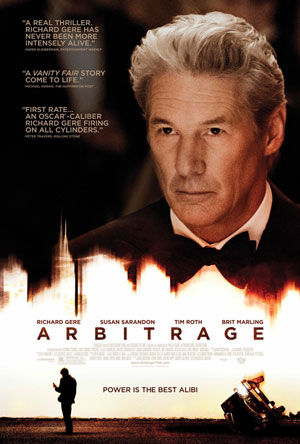 |
 |
 |
Looking at these posters closely in as full a resolution as I could find online, they have one thing in common: each image of the actor is a cutout placed in front of a different background from which the shot was taken. Artbitrage is the most blown-up…if you walk up to this poster in a theater and had a close look, I suspect, you’d see quite a bit of distortion. In The Hobbit, they’ve added a bit of noise to mask the upresing and blend it in with the colors of the bucolic background scene, but I suspect the picture was a much higher res to begin with. Gatsby remains the clearest photo, and the crispness works well with the art deco concept. A designer could create any of these looks with a photo of like the one of Leo DiCaprio, but it would be hard to create a Gatsby-like effect with the photo of Richard Gere.
In the absence of a large format camera in a studio environment, to get as full a resolution as possible, here’s what I suggest, and I know this is a bit unorthodox, but it’s pretty straightforward. Set up a white sheet as a background, or if your subject has a lot of fly-away hair, you may want to try it with a green or blue screen. (I found a cheap one here.) This will allow the designer to take away the background to produce a cutout. This is really no big deal for a graphic designer, unless there is a ton of hair involved, in which case, be sure to try it with a number of different backgrounds. This isn’t a shampoo ad, so shaving off a little hair is forgivable in this arena.
First, take a normal full body shot in portrait orientation just so there is at least one shot of the entire scene you are trying to capture.
But this shot will not be the one that is used. Instead, break the photo up into several shots…the trick is not to hold the camera in portrait orientation but keep it in landscape while you do this…then later on your designer reassemble them into a unified whole.
Why do it this way? Last week, I showed you what you can expect to achieve with a 16.1 megapixel camera:
![]()
Doing it this way will give you the most resolution to work with…
You may need to do it a few times to insure consistency in terms of lighting etc., but with the magic of photoshop, this shouldn’t be much of an issue. You’d want to be careful not to break the shot in the middle of any complicated parts, such as the person’s eyes or mouth, for example.
Start with the person’s face…make sure not to cut off the top of the head (even though two of heads in the posters here are cropped)…
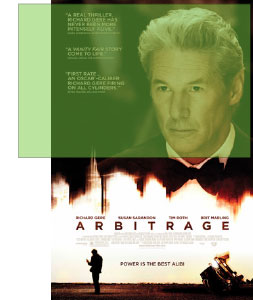 |
 |
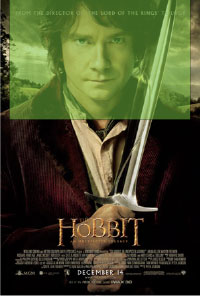 |
Then quickly lower the camera vertically and take another shot, so that the second overlaps just a bit, to get the upper part of the torso.
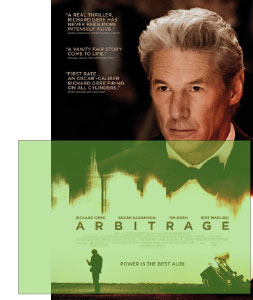 |
 |
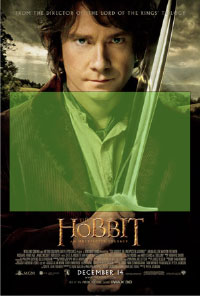 |
Make sure to take dozens of shots like these, so that you have enough photographs to mix and match, as sometimes the pictures can vary in terms of lighting, or your hand is not in the exact position, etc. If there is a prop involved, I would not have that in the shot, but just have them grip something similar and photoshop the item (like a sword) back in later. (Remember to also take pictures of the prop using this technique.)
Perhaps you don’t want to feature just one character…after all, your film may not involve such a recognizable star as Richard or Leonardo. Let’s say you really want a particular shot of two of your main characters in some sort of pose. Like in the following film, Not Fade Away.
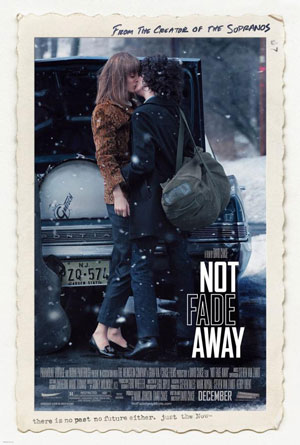 |
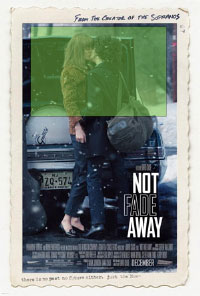 |
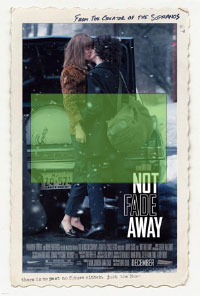 |
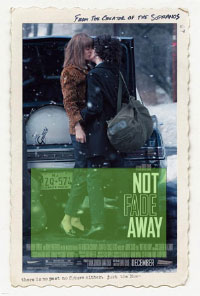 |
It is a bit counter-intuiative, but what I would do here is photograph the two characters in front of a solid background, not in front of the car. Then take a background photo (using the same technique here) of the car without the people. Then have your designer photoshop them together later. I would even go a step further and take a picture of the car without its background, and then take the trees as a separate photo. You never know how the composition will work best with your title treatment, or in different orientations (have a look at key art that is modified for a landscape orientation in iTunes trailer art…you’ll want to be able to move things around to create the look you want in the space that is allotted).
The point is that you are producing elements, not photos. Therefore, don’t just do this type of work for your actors/characters. Do it for your locations as well. You never know what background you may want to use, and the more shots you take, the more options you will have.
Of course, all this requires thinking ahead. But you will be glad you did.
Found this post informative? Check out David’s advice on Developing Key Art as your film enters the festival circuit.
David Averbach December 21st, 2012
Tags: film marketing, film posters, graphic design, key art, Photoshop, set photography, The Film Collaborative, unit publicist
Rethinking Your Key Art Game Plan, Part 1
Over the next several weeks, The Film Collaborative’s Creative Director, David Averbach, who has worked with dozens of TFC Clients and other filmmakers to help them create and refine their key art, will talk about ways you can avoid the problem of finding out all too late that you don’t actually have the proper materials to produce the key art you want to make.
Note: This Key Art series is intended for micro-budget filmmakers whose crew is not under a union contract. If your film’s crew is under an IATSE contract, you will need to abide by the rules regarding still photographers on set as forth by the union. We have been advised that there may be penalties involved by bringing an intern or PA in to shoot stills.
See Part II HERE
Takeaway: For narrative feature films, understanding the technical aspects of producing key art and thinking ahead to your key art while on your film set can save time, money and a heck of a lot of aggravation down the line.
If I had a nickel for every narrative feature filmmaker who has told me that they got a photographer, professional or otherwise, to come to their film set and shoot photos but in the end they didn’t show up or didn’t do a good job, or was only there for one day out of a sixteen day shoot, and therefore there was nothing to show for that effort in terms of producing images that could be incorporated into a poster, and therefore were only really left with the prospect of using frame grabs from their film, I’d be rich I could probably buy a Starbuck’s gift card that would last me a week or two.
I hope this series of posts can offer some helpful suggestions for you to avoid this situation for your next film.
First let me say that while I design movie posters, I don’t really have a background in filmmaking itself. If there is anything incorrect/inaccurate, generally unfeasible included here, or if you have anything you think I should add, please feel free to let me know. That said, it’s clear to me that in the heat of the film shoot, filmmakers often forget to think about or are so focused on the film shoot that they can’t get around to thinking about the art they might need to support a variety of possible marketing ideas and concepts, and are therefore down the road left with fewer choices and placed in an ultimately weaker position vis à vis possible options on how to market their film or sell it to a potential buyer without an expensive and inconvenient reshoot. (I’m working under the assumption that you are the type of filmmaker who has neither endless funds for a photo shoot 6 months after your shoot ends nor the energy to pull in yet another favor from some photographer you or one of your colleagues may have worked with in the past.)
There are two parts to tackling this problem. The first has to do with understanding resolution: what you have, what you need and how to bridge the two. The second has to do with beginning to think about your marketing strategy even before your film shoot, and preparing to build the raw materials you would need to execute any number of possible marketing directions.
So let’s talk about resolution first. (I’ll get to marketing strategy in Parts 2 and 3 of this series).
Knowing the resolution of your frame grabs
If you’re lucky enough to work with a 4K or 5K camera, such as a RED camera, meaning that the max output resolution is over 5000 pixels wide (5120×2560 on a RED) (which is about 6.5 times that of 1080p (1920×1080), those will produce beautiful film stills. So if you were to shoot your entire film in 5K, much of this next part won’t apply to you. In the real world, according to my DP friend, most people don’t and can’t afford the drive space and rig to do that in production. So if this is the case the highest output for a film grab might still be 1920×1080.
Now 1080p cameras that have a good quality and large sensor with a full chip (DP friend: preferrably not a 1/3 chip), will produce beautiful images…wonderfully clear, and of course you can blow them up to a certain extent without anyone noticing. But if you want your image to take up most of the width of your poster, you will have a resolution problem. The bottom line is, with 1080p output, if you want a theatrical poster using just a few main images, you won’t be able to really rely on frame grabs alone.
While frame grabs will probably work just fine to produce the key art for a DVD cover or a digital release, they are simply not going to cut it for a one sheet. And even while some films will never end up getting a proper theatrical release, all filmmakers tend to want a theatrical (sized) poster, especially if their film gets into a top-tier film festival.
Why won’t frame grabs work well? Well, Bill Clinton said it best: arithmetic.
Perhaps not every filmmaker knows how 1080p correlates to print resolution. As I state above, something that is shot in 1080p (16:9 aspect ratio) is 1920×1080 pixels in dimension. How many pixels will you need for a poster? Well, posters are usually 27×40 plus a ¼” bleed, and the minimum resolution is about 200 dpi (or dots per inch). That means that a poster needs to be at least 5500 pixels wide and that a frame grab would be up-res’d be almost a factor of 3 in order for it to stretch horizontally on a one sheet to even get up to 200dpi.
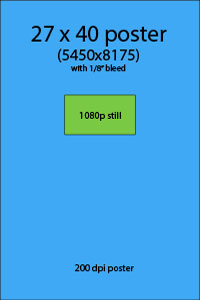 |
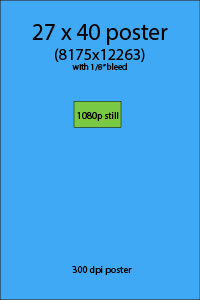 |
Until all cameras are 5K resolution and one can easily shoot their whole film this way, part of the collateral damage from the transition to digital is that this is yet one more thing that a filmmaker has to think about…in the days of 35mm, it was common practice to pick a frame of the film and scan it into a large still for use in a poster, but if the maximum output or effective maximum output from your camera is 1080p, you don’t have that luxury.
The end result will produce a blurry image at best and a pixelated image at worst. While this might be good for a background image, if you would like to use a close-up of someone’s face or a full body shot, this is just not going to look good.
Now that we’ve agreed that we need still photographs, what steps can you take to ensure that you will get something that you can use, both in terms of quality and content?
How to make sure you have images for key art—no matter what your budget
You are shooting with a great camera that can take great stills. But what if you can’t spare the time to use the camera you’re shooting on to also do stills?
On to Plan B. Hire a professional photographer, or at least someone with a really nice camera. In an ideal situation, you would get another 5D to take stills to complement the main motion picture camera. (Per my DP friend…Snug up to the lens…use Zeiss prime lenses for sharness or Canon L series lenses if going for more of a softer thing. If you can’t do that with your budget, use a monopod and critically check focus). This is great advice. If you have the budget for it.
But creating images for a poster is more than just producing nice photos. Shadowing the film shoot with a still camera often produces shots that are great for press stills, but may not be all that useful for a poster. Of course it depends on what kind of poster you will want to make. But in the end, it’s good to have a Plan C, and not in the sense that you need a third option because the first two didn’t work. I mean a concurrent Plan C.
This is it: Think of shots for key art as publicity shots, not as enlarged film stills. (And by “publicity shots,” I don’t mean for the actors, I mean publicity shots for the characters, so make sure they stay in character while you shoot them.) It’s fine to do what my DP friend says, but you need to do more. There’s lots of down time on a shoot. Actors are present and in costume and makeup. Move away from the action of the film. Use that hired photographer. Or use hire an intern with a good eye. Use that second 5K camera. Or get an inexpensive 16 megapixel camera. It doesn’t really matter. Just do it. Start outside around lunchtime, when the light is best. Find a white wall, or hang up a sheet outside somewhere. Think about what kind of poster you’d want to make. Develop half a dozen concepts (more on this in parts 2 & 3). Take it seriously. Start shooting.
What you should be creating here is this: Hi-res Scraps. You don’t know how you will use them, but at least you will have something.
Don’t have the budget for a second 5K camera? Fine. But we’ve gotten to a point where consumer cameras can actually produce extremely high quality and high resolution images. Last year, I bought this point-and-shoot camera on Amazon. It’s 16.1 megapixels. It lists right now at $150, but I think I bought it for $109 at one of those after Christmas sales. Every filmmaker has the budget for this much. You’ll be paying a lot more to correct this down the road if you feel this will put your budget over the edge.
See how much more you can get in terms of resolution when using a 16 megapixel camera as compared to a frame grab?
Is this a crappy camera? Compared to the ones you are using to film your shoot, absolutely. But graphic designers have their bag of tricks. Perhaps you’ve heard of Photoshop? We can make even images from these cameras look great. If the right shots are taken. So now there is no excuse to come back from a film shoot empty handed in terms of images for your key art… It is like buying key art insurance: you may not need to use it, but in a pinch you’ll be glad you have it.
Next week, in Part Two, I’ll give you some examples of a few concepts every film should have their “key art still person” shoot.
David Averbach December 12th, 2012
Tags: film marketing, film shoots, images, independent film, key art, One Sheets, Photograhers, posters, resolution, stills


